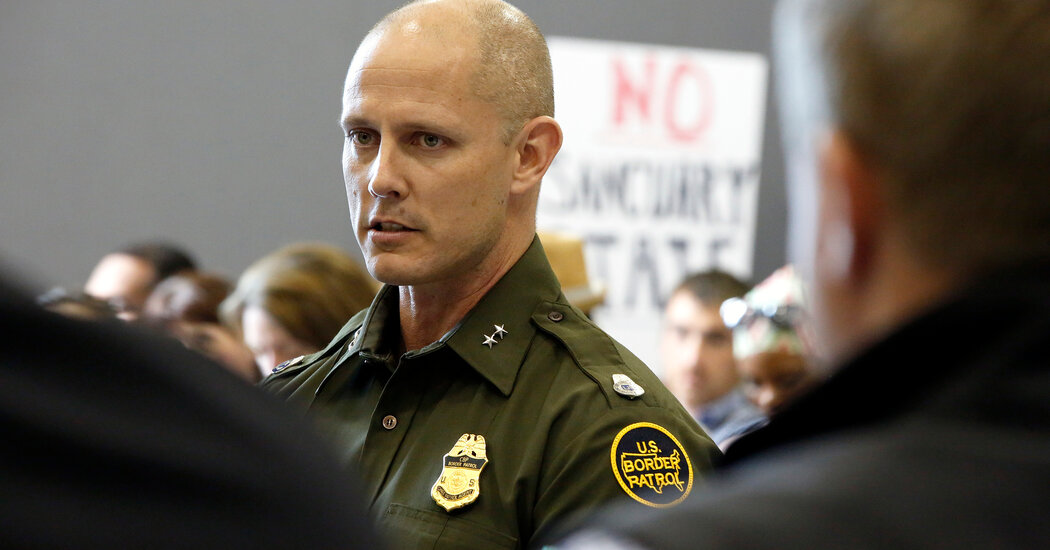Supreme Court Could Consider Virginia High School’s Admissions
In the coming weeks, the Supreme Court is very likely to forbid colleges and universities to use race as a factor in admissions decisions. Indeed, when the cases challenging the admissions programs at Harvard and the University of North Carolina were argued in October, some justices were already looking at the next question on the horizon: whether admissions officers may promote racial diversity by using race-neutral criteria.
“Your position,” Justice Brett M. Kavanaugh told a lawyer for the challengers, “will put a lot of pressure going forward, if it’s accepted, on what qualifies as race neutral in the first place.”
That question grew more concrete last week, when a divided three-judge panel of a federal appeals court allowed an elite public high school in Alexandria, Va., to revise its admissions policy by, among other things, eliminating standardized tests and setting aside spots for the top students at every public middle school in the area.
Those changes produced a class with more Black and Hispanic students and many fewer Asian American ones. In a dissent from last week’s decision that seemed to be addressed to the Supreme Court, Judge Allison J. Rushing wrote that the majority had refused “to look past the policy’s neutral varnish” and consider instead “an undisputed racial motivation and an undeniable racial result.”
It is a decent bet that the Supreme Court will agree to hear an appeal in that case and use it to answer questions left open in its coming decisions on the admissions practices of Harvard and U.N.C.
Those universities take account of race as such. The high school does not.
Indeed, admissions officers at the school, Thomas Jefferson High School for Science and Technology, known as T.J., are not told the race, sex or name of any applicant.
But the school did change its admissions requirements in 2020 after protests over the murder of George Floyd. “We each have a responsibility to our community to speak up and take actions that counter racism and discrimination in our society,” Ann Bonitatibus, the school’s principal, wrote in a message to students and their families.
She added: “Our 32 Black students and 47 Hispanic students fill three classrooms. If our demographics actually represented” those of the county’s public schools, “we would enroll 180 Black and 460 Hispanic students, filling nearly 22 classrooms.”
The revisions to the school’s admissions policy took a winding road, but in the end the school board did away with standardized tests and set aside spots for the top 1.5 percent of students from each public middle school in the area.
Admissions officers were also instructed to consider “experience factors,” such as whether students were poor, were learning English or were attending a middle school that was “historically underrepresented” at the high school.
After the changes went into effect in 2021, the percentage of Asian American students dropped to 54 percent from 73 percent. The percentage of Black students grew to 7 percent from no more than 2 percent; the percentage of Hispanic students grew to 11 percent from 3 percent; and the percentage of white students grew to 22 percent from 18 percent.
In the Fairfax County school system generally, about 37 percent of students are white, 27 percent are Hispanic, 20 percent are Asian and 10 percent are Black.
Writing for the majority in last week’s decision, Judge Robert B. King, who was appointed by President Bill Clinton, said the before and after numbers were not the right place to start the analysis. That would, he said, quoting from the school board’s brief, turn “the previous status quo into an immutable quota.”
In dissent, Judge Rushing, who was appointed by President Donald J. Trump, wrote that the Constitution’s guarantee of equal protection “would be hollow if governments could intentionally achieve discriminatory ends under cover of neutral means.”
Judge Rushing served as a law clerk to Justice Neil M. Gorsuch when he was an appeals court judge and to Justice Clarence Thomas on the Supreme Court. When a challenge to the new admissions policy at the high school reached the Supreme Court a year ago in the context of an application for emergency relief, those two justices, along with Justice Samuel A. Alito Jr., voted to block it while the appeal moved forward.
The Supreme Court has, in decisions from another era, endorsed and even required the consideration of race-neutral criteria.
In a concurring opinion in last week’s decision, Judge Toby J. Heytens, who was appointed by President Biden, said those precedents must count for something.
“Having spent decades telling school officials they must consider race-neutral methods for ensuring a diverse student body before turning to race-conscious ones,” he wrote, “it would be quite the judicial bait-and-switch to say such race-neutral efforts are also presumptively unconstitutional.”
Scholars, too, say that such a move would be a stunning reversal.
“It would be a surreal turnaround were the court to later hold that the very decision-making process the court has long required renders a resulting race-neutral policy unconstitutional,” Sonja B. Starr, a law professor at the University of Chicago, wrote in an article on this case and similar ones to be published next year in The Stanford Law Review.
But such a turnabout is hardly out of the question. Three justices voted to block the high school’s admissions program last year before the appeals court had even ruled. And it takes only four votes to add a case to the Supreme Court’s docket.


